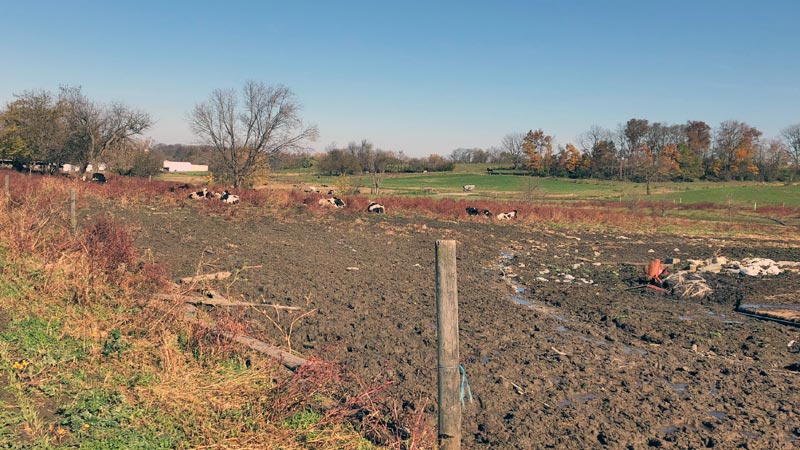
Every year, over a billion dollars are spent across the United States on stream restoration projects to improve stream health. Much like modern medicine, it’s a high-stakes practice where success means healthier streams at a reasonable price but failure is costly. That’s why scientists choose the right approach to stream restoration in the same way doctors treat illness: measure the symptoms, diagnose and treat the cause, and monitor the results to ensure recovery.
Unfortunately, stream restorations rarely get monitored rigorously enough to determine if the “patient” (the stream’s fish, aquatic insects, and chemistry) has fully recovered. Recovery can take years and is difficult to achieve without solving a stream’s problems where they start: in the watershed.
In late 2019, scientists at Stroud Water Research Center saw a unique opportunity to measure stream health recovery. The Stroud Center’s Robin L. Vannote Watershed Restoration Group had recently started a project on a small farm in Lancaster County, Pennsylvania. Their restoration plan for the 73-acre farm includes fencing to eliminate cattle access to the stream, 35-foot-wide tree buffers along 1,200 feet of stream length, a new waste storage unit, heavy use area protections, grassed waterways, and modified crop rotation and cover crops. These modifications will minimize runoff of contaminants to the stream while maintaining the profitability of the operation.
That’s all great news for the small tributary of Pequea Creek that receives water from the farm. But the great news for Stroud Center scientists is that the farm occupies 35% of the tributary’s watershed, a fraction large enough to make stream health recovery easily measurable because improvements in stream health won’t be negated by sources of pollution elsewhere as happens in much larger watersheds.
In addition, the timeline for the restoration activities provides enough time for scientists Diana Oviedo, Marc Peipoch, and Jinjun Kan to collect baseline measurements before restoration begins.
Thanks to the engagement and cooperation of the farmer, the science team began monitoring water chemistry and microbiology at the site in October 2019 and set up a monitoring station for continuous water depth, temperature, and electric conductivity in September 2020.
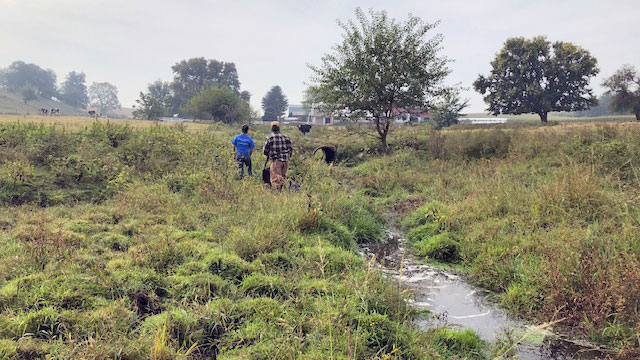
Scouting for a good location to install the monitoring station. 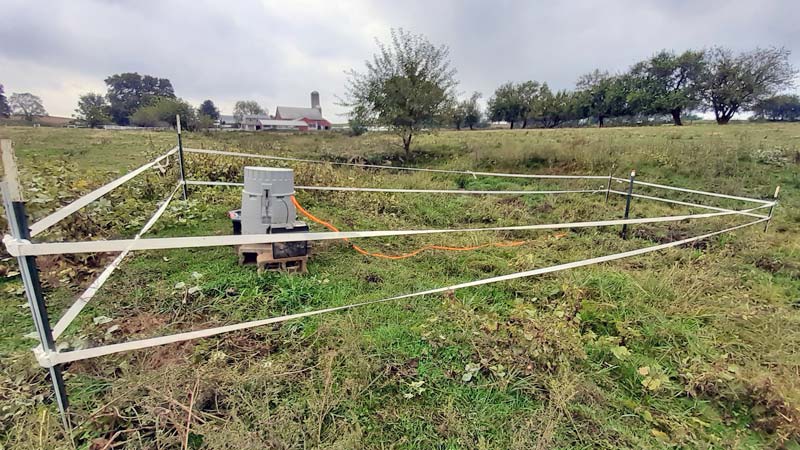
A monitoring station was installed in September 2020.
Analyses performed to date show very high concentrations of nutrients and bacteria in the stream water. Those concentrations increase even more during heavy rain and are most likely a result of the farming operations.
The restoration activities are planned to start in late fall 2020. Stroud Center scientists are optimistic they will see significant measurable improvements in water quality as the implementation progresses. They are committed to turn this into a multiyear study that will help address currently unknown aspects of the long-term effectiveness of watershed restoration.
As with many other tributaries of the Susquehanna River, Pequea Creek suffers drastic water quality degradation as a result of agricultural activities and development in its watershed. This research will help prioritize restoration projects in the region that will improve water quality for local streams and downstream ecosystems such as the Chesapeake Bay.
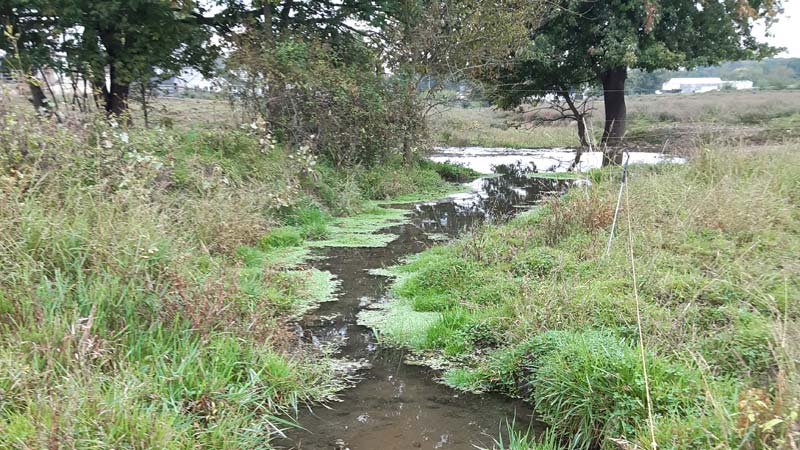
The view downstream of the monitoring station. 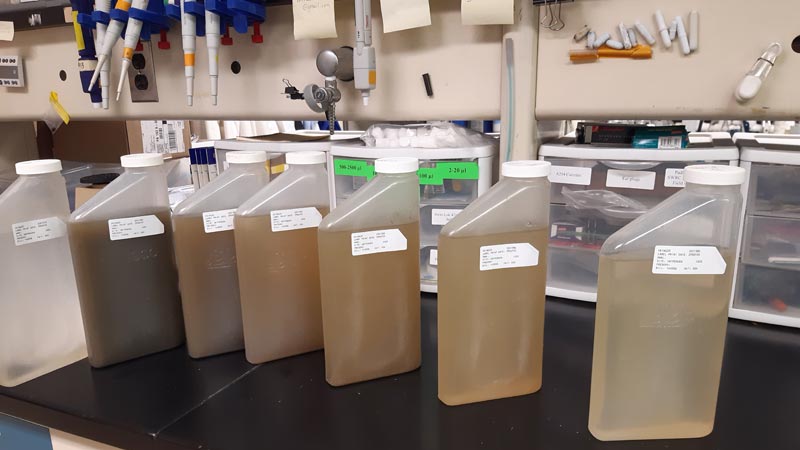
Stream samples collected during a storm event.

